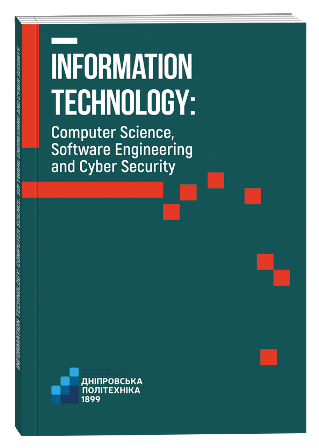METHODS OF NON-LINEAR DYNAMICS IN THE PROBLEM OF FORECASTING THE CHEMICAL COMPOSITION OF CAST IRON AT THE OUTPUT
DOI:
https://doi.org/10.32782/IT/2023-2-9Keywords:
stochastic signals, random process, forecasting, estimation, fractal analysis, dynamical system, bifurcation analysis.Abstract
Introduction. In order to increase the reliability and accuracy of the forecast values of the time series, which present the results of the chemical analysis of cast iron at the output of the blast furnace, this work proposes to use the methods of nonlinear dynamics. Based on the materials of the work (Gusev, Sidanchenko, 2022, p. 24–31), which presents the rationale for the hypothesis about the fractal nature of time series, it can be concluded that traditional forecasting methods are not adequate for the nature of the research processes. The research results show that the most promising approach to solving the task is the use of nonlinear dynamics methods. Methodology. As a rule, time series are random changes in values that allow us to consistently visualize the evolution of complex systems based on the data obtained. The most common methods of studying such systems use correlation and spectral analyses, data smoothing and filtering, autoregressive model and forecasting (Kornienko, Gerasina, Gusev, 2013). Most often, statistical analysis is based on the assumption that the behavior of the studied system is a random Gaussian process. However, many real time series are characterized by invariance with respect to large-scale transformations (property of self-similarity), due to which standard Gaussian statistics turns out to be untenable and the problem of studying time series, in this case, can be reduced to the analysis of stochastic selfsimilar processes that can be described by fractal sets (Mandelbrot, Benoît,1982; Feder, 1988). Scientific novelty. Nonlinear dynamics methods are a universal tool for the study of dynamic processes of natural and man-made origin, which allow identifying and characterizing dynamic systems of any origin. In particular, with their help, it is possible to determine whether the studied mode (or process) is random or deterministic chaos, which can be described in the language of differential equations. As you know, in many complex systems, phenomena of dynamic self-organization are quite often observed, which lead to the formation of structures, in particular time fractals. It should be noted that information about the parameters of such temporal fractal structures is extremely important for forecasting the evolution of complex technological systems, predicting catastrophic phenomena and emergency situations.
References
Гусєв О.Ю., Сіданченко В.В. Фрактальний аналіз реальних даних про хімічний склад чавуну на випуску доменної печі. Information Technology: Computer Science, Software Engineering and Cyber Security. 2022. № 2. С. 24–31.
Kornienko V.I., Gerasina A.V., Gusev A.Yu. Methods and principles of control over the complex objects of mining and metallurgical production. Energy Efficiency Improvement of Geotechnical Systems. . London : Taylor & amp; Francis Group. 2013. P. 183–192.
Mandelbrot, Benoît. The Fractal Geometry of Nature. W H Freeman & Co, 1982.
J. Feder. Fractals. New York : Plenum Press. 1988.
Grassberger P., Procaccia I. Characterization of strange attractors. Phys. Rev. Lett. 1983. № 50. Р. 346–349.
Олешко Т. І., Марусич О. В., Лещинський О. Л. Квазіциклічний передпрогнозний аналіз світових цін на нафту. Інститут економіки та менеджменту Національного авіаційного університету, 2011.







